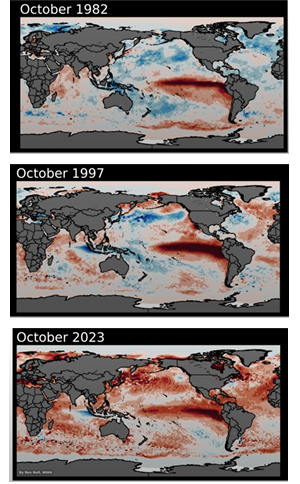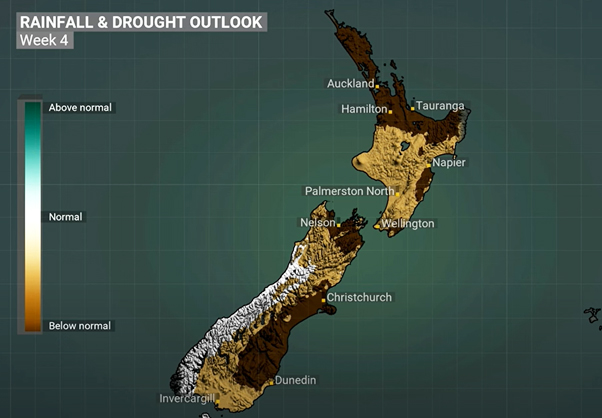
With the end of the year rapidly approaching it is perhaps worth having a look back and seeing where and how we’ve come as an industry through the last 12 months.
When we cranked up in January the prices being paid by livestock processors had taken a chronic downward slide. To a degree this is normal, but this season the drop was more marked than seen for some time. Lamb dropped 85c/kg between just prior to Christmas and mid-January and prime beef 40-50c/kg. By that time there had been a $2.65 kg drop since the giddy heights of October.
This drop has now stretched out to $3.20 and the falls continue.
This was also when, at least for those outside of the East Coast, that forestry slash became a regular part of our vocabulary as (ex) Cyclone Hale passed over wreaking havoc. An irony looking back was a comment I posted that perhaps things could only get better. Although the next post (Jan 20th) highlighted the big unknown, the weather. Then Cyclone Gabrielle came and made what had gone before pale in comparison. And the effects of the compounding cyclones, plus additional more extreme weather events have probably changed our view of what can be considered normal.
Speaking of which, back in May we were forecasting El Nino and by the end of July saying it was imminent. This assumed it was to be accompanied by drought or at least very dry conditions (which would have been a welcome change for many). However, this week we have had thunderstorms and torrential rain, which follows regular falls leading up to now. We have more grass than we know what to do with and presume NIWA have taken their phone of the hook.
Their latest update, which covers the December to February period, predicts dry periods ahead and explains the changeable nature of this season due to the greater amount of heat in the ocean in different places compared to previously strong El Nino years (see below).

Souce : NIWA December update.
Even if it heads into a dry spell now, we will be hard pressed to call it anything other than a good damp season, although there are still some predictions of 40oC days ahead.
By April earlier in the year the talk of recession was well advanced and those forecasting that got it more right than NIWA, unfortunately. I feel the elections aided this with the country going into a form of ‘lock-down’ for four weeks. Perhaps, this year is a good example of why a four year term has to be preferable. We’re one of the very few countries still persisting with less than four. To me this has been one of (and continues to be) the more volatile and ill-humoured years in politics I can recall. No doubt the easy access of social media has fed this to a large degree and this along with a need for some politicians to find a niche which provides a sustainable support group (at least until the wind changes, again) has led to a more divided country than I can recall seeing before.
Within the rural sector I feel the “Ground Swell” movement has been part of this, although a large number will disagree. Unfortunately, I can’t see next year being any improvement. For farmers much of the dissatisfaction has been driven by the on-off again policy changes to what was He waka eke noa (translation if we’ve forgotten “We’re all in this together”).
Under the new government I’m still not sure what the future policy is.
What parties campaigned on seems to be changing as the realities of government come into play. The latest COP28 climate conference, rather than clarifying positions and hardening up different government positions for future emission reductions, has with the objections of oil producing nations at including reductions in fossil fuels, not done anything to make the prospect of reduced CO2 emissions look any more likely.
Without considering the consequences, I can feel some sympathy for them. Oil is largely what their economies revolve around. I doubt our government would agree to reduce livestock in New Zealand, at least until there is some meaningful substitute to fill the economic gaps.
While for sheep and beef farming the past year has consisted of a consistent diet of bad news, be it weather or pricing. Dairy has had some upsides. While the TWI GDT price in US$ terms is slightly down on the opening values ($1,029 in January to $1,002 in December) at least forecasts looking ahead are more positive with Fonterra’s latest update now at $7.50 with the bottom end being pushed up. The El Nino dry has been delayed and on farm productivity should not be taking the hit predicted earlier.
Making any more than vague predictions for the next 12 months is fraught with danger from all fronts; markets, politics and climate, are all continuing to be in a volatile phase. So, a wait a see approach is the best that can be done. However, NIWA are predicting a warm and dry Christmas.

Source: NIWA for the Christmas week. Dark brown equates to drier warmer conditions.
20 Comments
Thanks Guy for a really good summary of the year, I enjoy your articles.
That 2023 graph of ocean heat compared to the other years is quite something.
And it is that uniqueness of the 2023 graph relative to other El Nino years that mean that it may play out rather differently this time.
KeithW
Yes, I was thinking about the implications of that amount of heat in the water. We are possibly already at the point where the oceans can't absorb any more heat in this way.
It's really hard to forward plan (for location longer-term) when different calculations put potential ice melt over the next 100 years at such different potential sea rise levels. Even a 1-2m sea rise is going to really impact our towns and cities - e.g. it would put the Wellington motorway along the coast section out of commission for a start.
Pretty frightening really, though good to see the need to transition away from fossil fuels got a mention for first time in a final COP statement…might not seem like a big deal but it is real progress. Agree totally with need for 4 year terms; 3 years is ridiculously short. Not only the time wasted electioneering and forming governments- real issue is not enough time to implement policy and be accountable for results
NIWA has lost it for sure. They have gone woke, like the rest of the state run institutions, which says you have to say what we want you to say. Might be time for a change of leadership there as well.
Let's just stick to the best technology we have to inform us. The minute one tries to dictate to the scientists how the outcomes should be we are lost in dictatorship.
Thing is Wrong John, you need to look at your barometer and out the window, then listen to forecasts. Generally they are within cooee.
If you think we should be given weather forecasts that are 100% all the time maybe you should give it a go.
We are in the middle of a huge ocean, work it out.
It is predicting weather over the short, medium and long term. They can only run on chances based on previous El Nino events, and this years shift from an unprecedentedly long La Nina coupled with the drastic change we see in oceanic temperatures will have new and unknown effects on weather patterns. I can;t personally fault them for being overly cautious, especially given the potential impacts severe drought would have on certain parts of the country, as well as heat waves. Better to be overly cautions than have your local council send a notice out with severe water restrictions halfway through summer due to severe lack of water to draw from.
Weatherwatch.co.nz , They called it correctly . but in niwa's defence , nothing about the weather is "normal" anymore .
A drought could start now , and last till May.
And honestly solarb I'm expecting just that, and have left the grass long on the orchard deliberately (it stops the trees drying out by reducing the ground temperature considerably). I was thinking earlier this big hailstorm we just had across the country was likely going to be the last serious rain we had for a couple of months, if not more.
Yes , given the weather till now , I was tossing up wether to risk planting some trees. Luckily my digger ended up on an angle where I run out of balls, causing a rethink. Though I do have water available.
Haven't had stock on for a few months, and I'm planning on mulching or composting my entire 10 acres. Hopefully growing deeper roots in the meantime.
Good idea. Are you thinking of doing a green cover crop? That's a lot to mulch.
Not at this stage, just mulching the grass and weeds that are already high. Will decide what to do after that. I do like the idea of oats as a green cover crop. Might do each paddock in something different to experiment. Still tossing up wether to raise autumn born calves or not.
Lot's of interesting insights there and agree with all your opinions.
And yes, a four year term just makes so much sense. Actually if we went to five I suspect even more would be accomplished as incumbents would have even more accountability to the electorate in terms of tidying up their own mistakes. But you'd likely want to introduce a mechanism with respect to a citizen-initiated vote of no confidence (such that the citizenry could force a new election mid-term).
Always enjoy your contributions Kate but I am very dubious about referendums, lets just stick to elections.
Referendums just leads to no decision as there will always be decent on most policy, and often turn out is poor, which leads to poor outcomes.
Always think of when a referendum was proposed and possibly held in Whanganui by Mayor Laws asking if rates should be raised by something like 1% or 3% or 7%
Obviously the result was 1% regardless of the fact we needed 7%.
So, as I see it , we need to let the Govt that is voted in and under our system formulated, be given the chance to do what they feel is the right way to go.
If at the end of their 3yr term the population feels it is wrong we can vote them out, simple.
That is another reason I am dubious about 4yr terms of Govt. 3yrs is ample time for us to decide if the elected are good or bad.
3 years might be long enough to work out if a government is good or bad, but doesn’t give them time to do much and no incentive at all to get into some of the tougher stuff that usually involves negative effects up front before longer term benefits are produced. So the risk is flip-flopping every 3 years and achieving nothing
This chap got his forecast correct. Perhaps NIWA could give him a call.
October 22, 2022 - 6:05AM
...The real problem we face right now is that we are facing a wet end to spring and a wet summer on wet or flooded catchments.
By the time we get to the end of summer I’m expecting this event to go down in the history books as the “Flooded Summer”
https://www.skynews.com.au/australia-news/how-a-tongan-volcanic-eruptio…
Perhaps will linger for longer.
How the Tonga volcano eruption from 2022 may affect Australia's weather for up to eight years
https://www.abc.net.au/news/2023-02-16/tongan-volcano-impact-australian…
What do the red bits on the ocean map describe specifically?
Surface temperature of ocean waters. The ocean acts as a buffer for climate change by absorbing heat from the atmosphere, however as this continues, the weather patterns will become more extreme due to large changes in weather cycles around the globe.
Another 'historic' COP- number 28 and counting- and yet another ringing declaration that reminds me forcibly of Chamberlain's peace in our time. Reality simply must not be allowed to intrude and the reality is that the 1.50% target is dead in the water-and has been for a long time.
I am looking at the Economist Nov. 5th 2022 with its cover heading; Say Goodbye To 1.50%C. A senior researcher at the Cicero Centre for International Climate Research said; It is increasingly embarrassing to say the 1.50C target is still within reach, while James Hansen was typically blunt in saying that the target was 'deader than a doornail' and that anyone who claimed otherwise was 'lying'.
The world's biggest carbon emitters are; China, the US, India and Russia. These countries-and others- will ALWAYS put their perceived self-interest before anything else. Sure, China is building wind farms and solar panels at scale-and nuclear power stations- but they are also building more coal-fired power plants.
Don't misunderstand me, climate change/global warming is all too real, but I prefer to deal with reality-not hot air. Meanwhile, back here with an economy creaking at the seams and with agriculture still our biggest source of export revenue, we need to tread very carefully Some of the nonsense coming from the Climate Commission is breathtaking in its stupidity. Our total CO2e emissions represent some 0.17% of global emissions. If we shut our entire economy down tomorrow, the atmosphere would not notice the difference.
Those pictures are like watching a pot of cold water heating up on a stove as the heat keeps getting applied. If it’s very different to the past so expect very different outcomes I suppose. May get more cyclones in Autumn?
We will see.

We welcome your comments below. If you are not already registered, please register to comment
Remember we welcome robust, respectful and insightful debate. We don't welcome abusive or defamatory comments and will de-register those repeatedly making such comments. Our current comment policy is here.